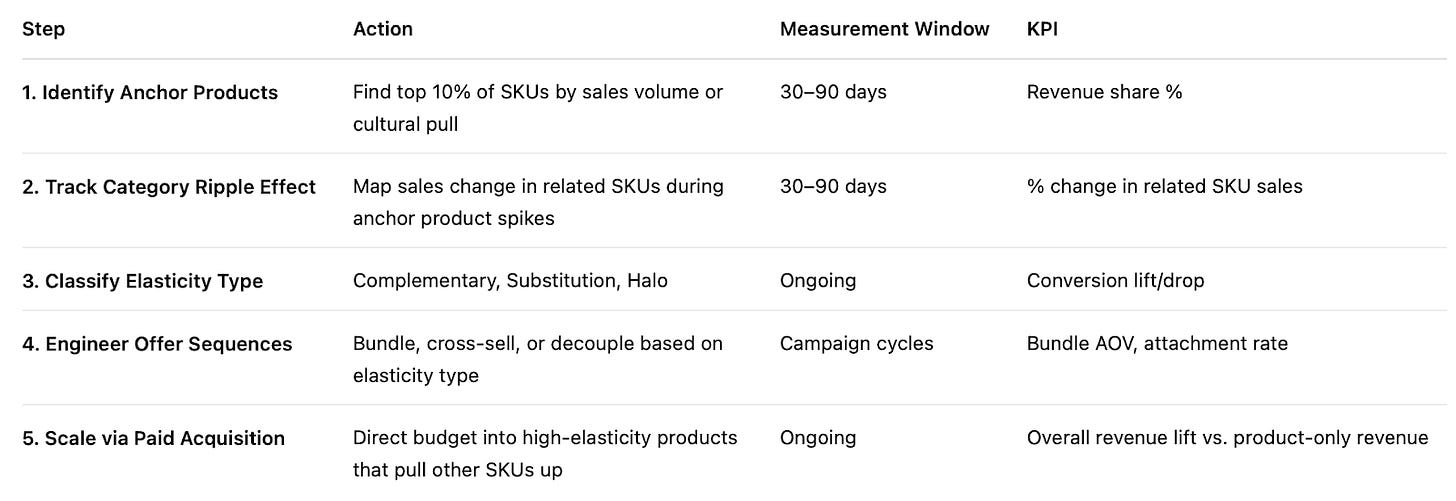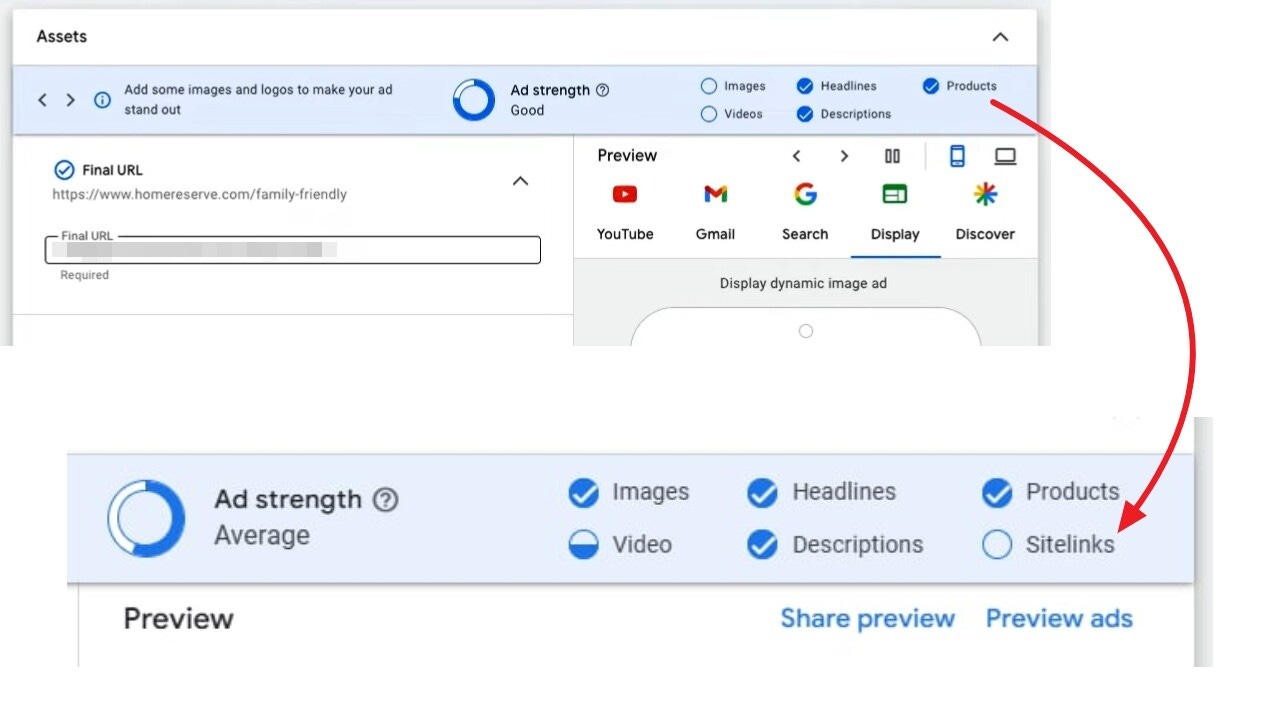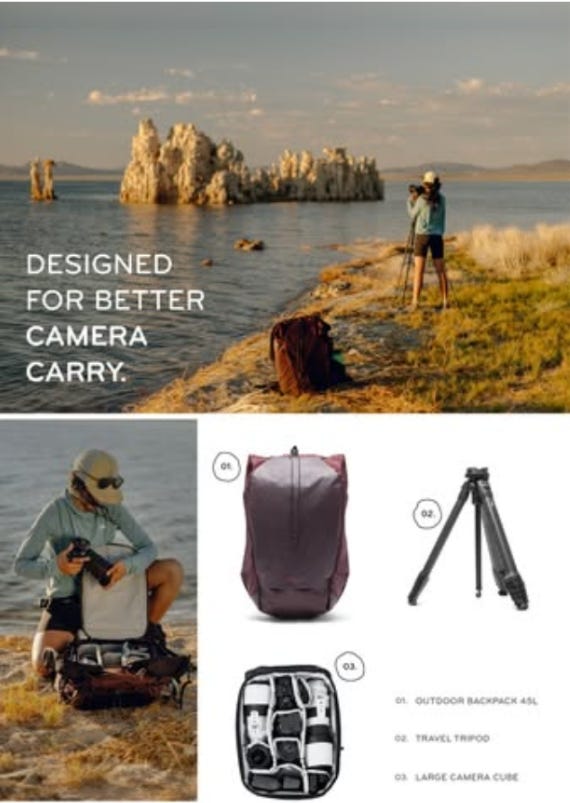The Offer Chain Reaction
👀How elite DTC brands turn one product’s demand into a multiplier for the entire catalog, Google Supercharges Creative Testing and Ad Strength with AI & Sitelinks, and more!
Howdy Readers 🥰
In this newsletter, you’ll find:
👀The Offer Chain Reaction: How elite DTC brands turn one product’s demand into a multiplier for the entire catalog.
🧪 Google Supercharges Creative Testing and Ad Strength with AI & Sitelinks
🏆 Ad of the Day
If you’re new to ScaleUP then a hearty welcome to you, you’ve reached the right place along with 50k+ CEOs, CMOS, and marketers. Let’s get into it, shall we? Oh! Before you forget, if someone forwarded this newsletter to you, don't forget to subscribe to our newsletter so you never miss out!
Together with TrafficGrid
Scalable Newsletter Growth for $1 CPL, with this Secret Tool
The first thing TrafficGrid subscribers do is open your newsletter, and they keep opening it.
That’s because TrafficGrid matches your content with U.S. readers showing strong real-time interest in your niche.
They don’t just deliver leads, they deliver intent. Using 30+ signals, they serve your offer to people who already engage with newsletters like yours.
The result? $1 cost per subscriber and up to 60% open rates from week one.
One client in a sports niche achieved a 53.14% open rate and over 1,100 clicks in just 30 days with TrafficGrid. But it all starts with the first 200, completely free.
If you’re publishing to at least 5,000 U.S. readers already, you can qualify for a highly engaged 200 free leads test campaign. It’s the clearest proof your growth strategy is ready to scale.
Let’s walk you through the strategy behind it, starting with your free strategy call!
👀The Offer Chain Reaction: How elite DTC brands turn one product’s demand into a multiplier for the entire catalog.
Most brands measure product performance in isolation, looking only at direct sales.
But in advanced eCommerce, the question isn’t just “How well does this SKU sell?” it’s “What other sales does this SKU trigger?”
That’s the essence of Cross-Offer Elasticity Testing, mapping how demand in one product line affects sales in another, and engineering bundles, sequencing, and offers to maximize that chain reaction.
The 3 Dimensions of Offer Elasticity
Complementary Elasticity
When one product increases demand for another because they are naturally used together.
Example: A premium coffee subscription drives increased sales of branded mugs and storage canisters.
Substitution Elasticity
When demand for one product suppresses demand for another because they solve the same need.
Example: A high-performance blender cannibalizes sales of the mid-tier blender SKU.
Halo Elasticity
When demand for a flagship product lifts brand trust and improves conversion rates on unrelated products.
Example: A sold-out limited sneaker drop lifts apparel sales by 18% in the same quarter.
Execution Framework: The Offer Chain Reaction, Map
Scaling Elasticity Wins
Once you’ve mapped elasticity, you can:
Build anchor-led bundles for the highest-complementary pairs.
Avoid running parallel ads for SKUs with high substitution elasticity to prevent internal cannibalization.
Time launches so halo products lift the rest of the catalog during peak buzz.
And when you’re ready to scale your highest-elasticity products, amplify them through channels with rapid reach and precise targeting. For example, TikTok Ads can put your best “revenue multiplier” SKU in front of high-intent audiences fast, accelerating the ripple effect across your catalog.
Right now, you can get $200 worth of TikTok ad credit when you spend $200, the perfect way to test your most elastic offers at scale.
🧪 Google Supercharges Creative Testing and Ad Strength with AI & Sitelinks
Google Ads just dropped three major updates that give marketers more control over creative testing, asset optimization, and ad strength scoring. From Demand Gen A/B testing to sitelinks now affecting PMax ad strength, and AI enhancements rolling out across image and video creatives, Google is clearly pushing advertisers toward smarter automation.
The Breakdown:
1. Creative A/B testing in Demand Gen - Marketers can now test images and videos side-by-side in Demand Gen campaigns to see which creatives actually drive performance. Google duplicates the campaign and runs both variants under a 50/50 split with shared budgets and dates.
2. Sitelinks now impact PMax ad strength - Sitelinks are now a formal part of the ad strength metric for Performance Max, affecting how campaigns are scored and optimized. Missing sitelinks could drag down scores, limiting reach and visibility.
3. AI-powered asset optimization hits Demand Gen - Starting Sept. 4, Google will automatically enhance images and videos in Demand Gen with new layouts, sizes, and AI-generated variations. Features like AI image editing and post-click previews will also roll out.
As Google pushes deeper into AI-led automation, creative testing and asset quality are becoming mission-critical. These changes empower marketers to test faster, adapt smarter, and stay competitive as campaign complexity grows. Those who embrace the tools now will have a clearer edge heading into Q4.
🏆 Ad of the Day
What Works:
1 Modular System Framing - Breaking the gear into a 3-piece layout (backpack, tripod, camera cube) positions it as a complete, purpose-built ecosystem. It visually simplifies decision-making for creators who want efficiency without overthinking gear selection.
How it works: This modularity makes the brand feel pro-level, intentional, and designed for serious creators, not casual hobbyists.
2 Context-First Visual Storytelling - The lifestyle image up top (sunset shoot by the lake) immediately signals “real creator in the wild” use case. It anchors the product in aspirational fieldwork rather than sterile studio shots.
How it works: It positions the brand as gear made by and for field-tested creators, reinforcing authenticity and trust.
3 Clean, Grid-Based Visual Layout - The minimalist layout with clearly labeled components adds an editorial feel, signaling clarity, logic, and product mastery. The visual calm contrasts against the complexity of the creator’s work.
How it works: This makes the brand feel premium and thoughtfully engineered, elevating perception beyond generic camera accessories.
Broader Insights:
This ad reflects the evolution from single-product DTC to modular, multi-use systems built for identity-driven creators. In categories like travel, outdoor, and content creation, buyers are no longer just looking for features; they’re looking for ecosystems that reflect their workflows.
Advertise with Us
Wanna put out your message in front of over 50,000 best marketers and decision makers?
We are concerned about everything DTC and its winning strategies. If you liked what you read, why not join the 50k+ marketers from 13k+ DTC brands who have already subscribed? Just follow this.
At ScaleUP, we care about our readers and want to provide the best possible experience. That's why we always look for ways to improve our content and connect with our audience. If you'd like to stay in touch, be sure to follow us EVERYWHERE🥰
Thanks for your support :) We'll be back again with more such content 🥳





